Consumption of High-Fructose Corn Syrup Compared with Sucrose Promotes Adiposity and Increased Triglyceridemia but Comparable NAFLD Severity in Juvenile Iberian Pigs
- PMID: 33693900
- PMCID: PMC8112773
- DOI: 10.1093/jn/nxaa441
Consumption of High-Fructose Corn Syrup Compared with Sucrose Promotes Adiposity and Increased Triglyceridemia but Comparable NAFLD Severity in Juvenile Iberian Pigs
Abstract
Background: Fructose consumption has been linked to nonalcoholic fatty liver disease (NAFLD) in children. However, the effect of high-fructose corn syrup (HFCS) compared with sucrose in pediatric NAFLD has not been investigated.
Objectives: We tested whether the isocaloric substitution of dietary sucrose by HFCS would increase the severity of NAFLD in juvenile pigs, and whether this effect would be associated with changes in gut histology, SCFA production, and microbial diversity.
Methods: Iberian pigs, 53-d-old and pair-housed in pens balanced for weight and sex, were randomly assigned to receive a mash diet top-dressed with increasing amounts of sucrose (SUC; n = 3 pens; 281.6-486.8 g/kg diet) or HFCS (n = 4; 444.3-724.8 g/kg diet) during 16 wk. Diets exceeded the animal's energy requirements by providing sugars in excess, but met the requirements for all other nutrients. Animals were killed at 165 d of age after blood sampling, and liver, muscle, and gut were collected for histology, metabolome, and microbiome analyses. Data were analyzed by multivariate and univariate statistics.
Results: Compared with SUC, HFCS increased subcutaneous fat, triacylglycerides in plasma, and butyrate in colon (P ≤ 0.05). In addition, HFCS decreased UMP and short-chain acyl carnitines in liver, and urea nitrogen and creatinine in serum (P ≤ 0.05). Microbiome analysis showed a 24.8% average dissimilarity between HFCS and SUC associated with changes in SCFA-producing bacteria. Body weight gain, intramuscular fat, histological and serum markers of liver injury, and circulating hormones, glucose, and proinflammatory cytokines did not differ between diets.
Conclusions: Fructose consumption derived from HFCS promoted butyrate synthesis, triglyceridemia, and subcutaneous lipid deposition in juvenile Iberian pigs, but did not increase serum and histological markers of NAFLD compared with a sucrose-enriched diet. Longer studies could be needed to observe differences in liver injury among sugar types.
Keywords: added sugar; dysbiosis; metabolomics; microbiome; pediatric.
© The Author(s) 2021. Published by Oxford University Press on behalf of the American Society for Nutrition.
Figures
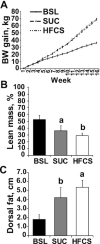
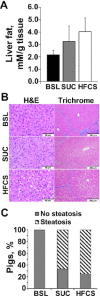
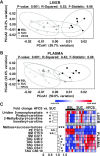
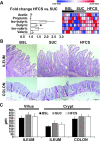
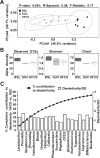
References
-
- Schwimmer JB, Deutsch R, Kahen T, Lavine JE, Stanley C, Behling C. Prevalence of fatty liver in children and adolescents. Pediatrics. 2006;118(4):1388–93. - PubMed
-
- Xanthakos S, Miles L, Bucuvalas J, Daniels S, Garcia V, Inge T. Histologic spectrum of nonalcoholic fatty liver disease in morbidly obese adolescents. Clin Gastroenterol Hepatol. 2006;4(2):226–32. - PubMed
-
- Schwarz JM, Linfoot P, Dare D, Aghajanian K. Hepatic de novo lipogenesis in normoinsulinemic and hyperinsulinemic subjects consuming high-fat, low-carbohydrate and low-fat, high-carbohydrate isoenergetic diets. Am J Clin Nutr. 2003;77(1):43–50. - PubMed
-
- Kang H, Greenson JK, Omo JT, Chao C, Peterman D, Anderson L, Foess-Wood L, Sherbondy MA, Conjeevaram HS. Metabolic syndrome is associated with greater histologic severity, higher carbohydrate, and lower fat diet in patients with NAFLD. Am J Gastroenterol. 2006;101(10):2247–53. - PubMed
Publication types
MeSH terms
Substances
Grants and funding
LinkOut - more resources
Full Text Sources
Medical
